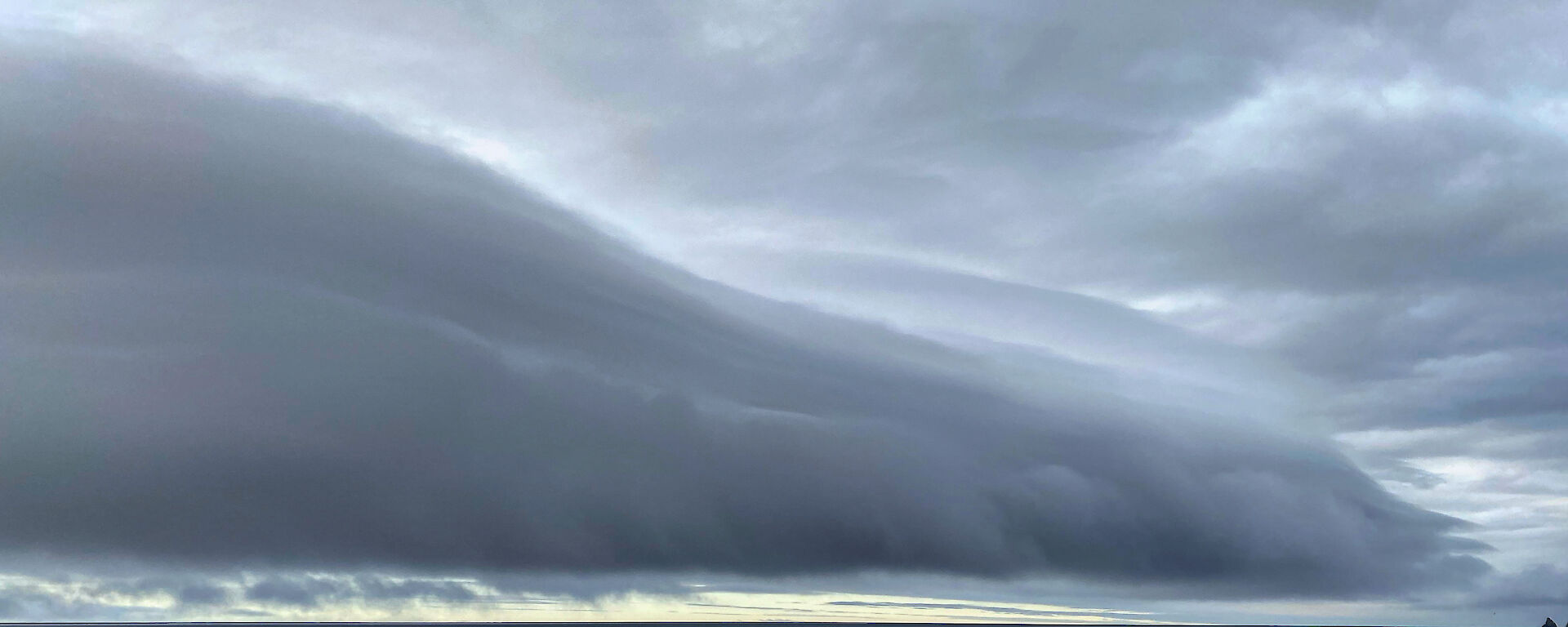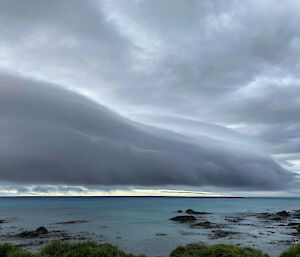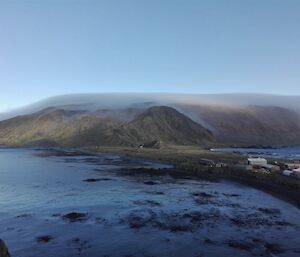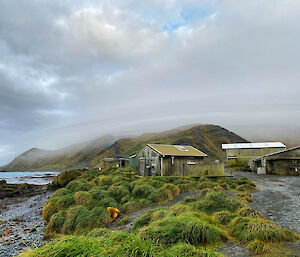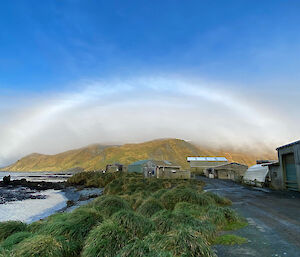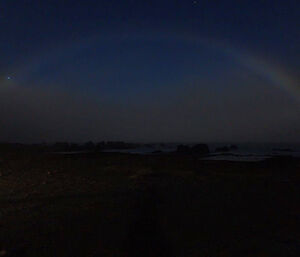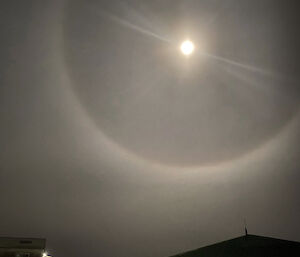Just like our expeditioners, clouds come in all kinds of shapes and sizes, and one of our jobs at the Meteorological Office on Macca is to describe and report them. The cloud that is, not the people!
Due to the location and topography of the island we can get some pretty spectacular photo-worthy cloud formations and ‘phenomena’, such as halos, fog bows, lunar bows, lenticular clouds, gravity waves and much more.
So, how do some of these cloud phenomena occur?
We’ve all seen rainbows during the day, but what about at night? Our keen-eyed Met Observer, Jase, spotted one of these lunar bows. They form the same way as a day rainbow – light refracting through water droplets – but the light source is the moon instead of the sun. Another type of ‘bow’ is the fog bow. Same concept, however the water droplets are much smaller so the light cannot refract into the colours you see in the other types of bows. Instead, they take on a grey or white appearance.
One of the more impressive looking clouds is the lenticular or lens shaped formations. This type of cloud is created by air coming over/across a ‘speed bump’ (such as the plateau/hilly landscape of Macca), being forced to rise, cool and condense, and creating these smooth looking clouds.
Halo phenomena are seen both during the day and night, and they are caused by refraction or reflection of light by ice crystals suspended in the atmosphere, creating a circle of light around the sun or moon. These ice crystals are usually present in the form of a thin veil of cirrostratus or cirrus across the sky. Like rainbows, a halo viewed during the day may sometimes have colours, while a halo created by moon light is always a plain white ring.
With another six months to go, we are looking forward (and up!) to capturing some more photogenic meteorological wonders to share with you all.
Alana, Senior Meteorological Officer

